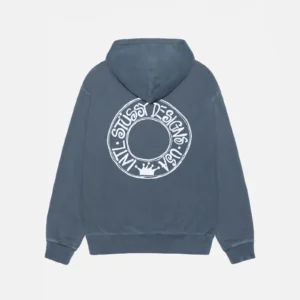Cultural Code: Stüssy's Role in Shaping Urban Identity

In the world of fashion, few brands carry the cultural gravity of Stüssy. What began in the early 1980s as a local surf project has grown into a global streetwear institution—one that not only reflects urban life but actively helps shape it. More than a clothing brand, Stüssy operates as a cultural code, a visual language that speaks to generations of urban youth around the world. Its impact on identity, community, and creative expression is deep-rooted and enduring.
From Local Vibes to Global Language
Shawn Stüssy didn’t set out to create a global fashion movement—he just wanted to sell surfboards. But when he started printing his signature on T-shirts and selling them alongside his boards in Laguna Beach, something clicked. The script logo, raw and energetic, carried the feel of handstyle graffiti and underground zines. It felt real, accessible, and personal.
That authenticity traveled. Stüssy’s pieces resonated beyond the beach, speaking directly to skaters, rappers, DJs, and downtown creatives in places like New York, London, and Tokyo. Very quickly, Stüssy became more than a brand—it became a symbol of urban expression.
The Power of the Tribe
A huge part of Stüssy’s Clothing cultural blueprint was the formation of the International Stüssy Tribe—a loosely organized, highly influential collective of artists, designers, DJs, and tastemakers across the globe. Members weren’t just customers; they were collaborators, curators, and ambassadors of the brand’s ethos.
This tribe was about more than street style—it was about shared identity across borders, rooted in subcultural values: freedom, rebellion, creativity, and community. The tribe concept allowed Stüssy to embed itself deeply into diverse local scenes while maintaining a unified global presence.
Design as Urban Language
Stüssy’s clothing has always communicated more than aesthetics. Each graphic, logo placement, font choice, and fit becomes a kind of cultural shorthand—a wearable signal of who you are and what you stand for.
The brand’s design pulls from reggae, punk, skateboarding, hip-hop, rave culture, and more. It remixes visual elements from flyers, record sleeves, political posters, and graffiti walls to create a look that is layered with meaning. The result is a brand that doesn’t just sell clothes—it sells cultural fluency.
Urban Uniforms: Clothing and Identity
In the context of urban identity, fashion is more than fabric—it’s armor, statement, and signal all in one. Stüssy has long understood this. Its relaxed silhouettes, workwear-inspired fabrics, and minimalist graphics provide the foundation for urban uniforms. These clothes don’t wear you—you wear them. And in doing so, you tap into a shared sense of cool, creativity, and consciousness.
For many wearers, Stüssy represents more than style. It’s a marker of belonging—to a city, a scene, a worldview. Whether you’re at a skate spot in LA, a record shop in Tokyo, or a gallery opening in Berlin, spotting that familiar script logo feels like spotting a kindred spirit.
Crossover Without Compromise
Stüssy’s role in shaping urban identity also lies in its unique ability to crossover between subcultures and luxury spaces without losing credibility. While other streetwear brands chase hype, Stüssy has maintained its identity through consistency and authenticity. Collaborations with the likes of Nike, Our Legacy, and Dior aren’t just clout grabs—they’re extensions of the brand’s reach into different creative spheres.
This versatility reflects the modern urban identity itself: fluid, layered, and always evolving. In many ways, Stüssy’s refusal to be boxed in mirrors the multifaceted nature of city life, where influences intersect and individuality thrives.
Streetwear as Cultural Architecture
Stüssy helped lay the foundation for what we now call streetwear—a term that encompasses far more than fashion. Streetwear is cultural architecture: a way to build and define personal and collective identities through style, sound, and attitude. Stüssy’s role in that architecture is foundational. It didn't just respond to urban culture; it helped construct it.
Today’s brands often emulate Stüssy’s model—combining design with subculture, community with commerce—but few achieve the same balance of relevance and restraint.
Conclusion: More Than Just a Brand
Stüssy’s cultural code is written not in fabric and thread alone, but in the connections it fosters, the histories it honors, and the values it upholds. It is not just about clothing—it’s about what the clothing represents: freedom, belonging, and the power of urban creativity.
- Art
- Causes
- Crafts
- Dance
- Drinks
- Film
- Fitness
- Food
- Jogos
- Gardening
- Health
- Início
- Literature
- Music
- Networking
- Outro
- Party
- Religion
- Shopping
- Sports
- Theater
- Wellness


